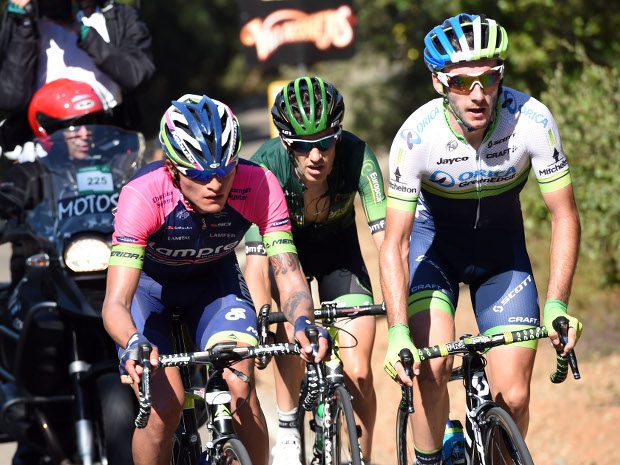Asthma inhalers and pro cycling
Exercise induced asthma quite common amoung elite athletes.

Simon Yates (Orica-GreenEdge) is not the only elite athlete who uses an asthma inhaler. With news that the British cyclists failed a doping control at Paris-Nice because of the presence of terbutaline from an in-competition sample taken, it raises questions about why world class athletes need asthma medication to compete at their full potential.

Many professional athletes have exercise-induced asthma (EIA) in which rapid or heavy breathing results in the same symptoms as classic asthma according to a 2014 study. The more common form of asthma is allergy-triggered and results in the constriction of the bronchial tubes and will often begin in childhood.
In 2014, The Guardian wrote about John Dickinson from Kent University who found that one-third of Team Sky and 70 per cent of the British Swimming team had some degree of asthma against a national of about 8 to 10 per cent. Dickinson said, “It depends which respiratory consultant you talk to on whether you put these athletes on a spectrum of asthma, or whether you think that’s purely down to them exercising really hard in a certain environment, and if you take them out of that environment they’re fine. It’s a grey zone. But my argument is it’s a form of asthma.”
One of the triggers that have been identified for EIA is the rapid inhalation of cold, dry air. Yates was using terbutaline to treat his asthma and is an alternate treatment to the more common is the alternate form of treatment and does require a TUE since 2010. A University of Copenhagen study found that high doses of terbutaline increases isometric muscle strength and enhances peak power during a Wingate test in trained men.
Athletes often are seen using salbutamol, the most common form of asthma medication usually taken in a blue inhaler. This drug does not need a doctor’s therapeutic use exemption (TUE) when used within certain limits. However exceeding those limits has lead to suspensions as was the case with Diego Ulissi (Lampre–Merida).
Ulissi was suspended for nine months for testing positive for salbutamol. A urine tested showed 1900 nanograms per millilitre of salbutamol which is close to double the allowed limit of 1000ng/ml. His team explained that Ulissi was using an inhaler with salbutamol spray, took two puffs before the stage and a paracetamol pill after crashing on Stage 11 of the 2014 Giro. His team explained at the time that he was using an inhaler with salbutamol spray, took two puffs ahead stage and a used a paracetamol pill after a crash.
Yates, whose doctor failed to apply for a TUE has not been sanctioned by the UCI. The news that he had failed the test was the result of a leak, something his Orica-GreenEdge team were not happy about claiming that it was British Cycling’s fault.
